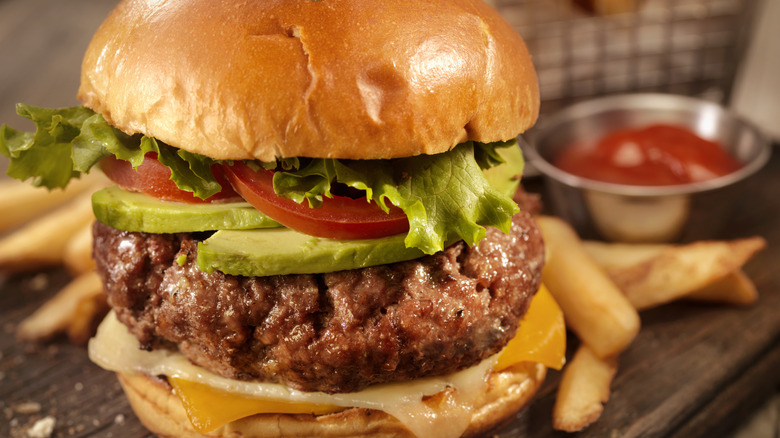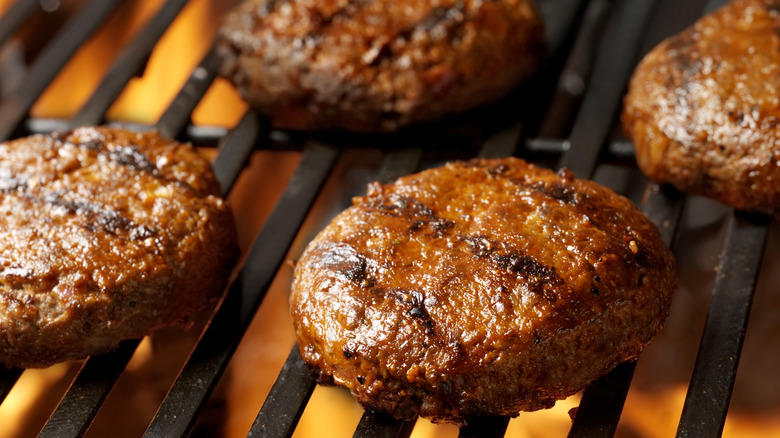What's The Key To Restaurant-Quality Burger Patties? We Asked An Expert
Few things are as consistently craveable as a delicious burger. It's no wonder that so many restaurants feature burgers as part of their menu, and there are some truly delectable options out there. But what about when you're hankering for one on a night in? If you've experimented with making burgers at home, you probably already know that, almost always, burgers taste better at a restaurant. So we consulted an expert to find out why that is, no matter how many fancy toppings or seasonings you use.
Sherry E. Cardoso works as the culinary director for Patti Ann's restaurant and bakery in Brooklyn, New York. She revealed to Mashed that the key to leveled-up burger patties is all in the meat ratio, saying, "A key ingredient for a delicious burger is the mix of the ground beef used." A common mistake people make when cooking burgers is buying ground beef from the grocery store without paying much attention to the fat percentages. As Cardoso advises, working with high-fat beef is essential to achieving great-tasting patties.
Know your ratios
The high fat percentage in restaurant burgers leads to better flavor and generally makes for a juicier patty. But restaurants don't just use a generic formula like 15% fat content across the board, says Cardoso, noting, "Restaurants set themselves apart when using a specialty blend." Cardoso didn't share Patti Ann's signature blend but stated, "Something fatty is always optimal." The animal fat found in beef — rather than, say, olive oil — contains fatty acids that, when oxidized through cooking, actually enhance and deepen the meat's flavor, which is why a fatty beef burger has richer flavor notes than a lean patty cooked in veggie oil.
When you look for ground beef in the grocery store, you'll typically see plastic containers labeled with percentages; these are meant to indicate the proportion of fat to lean content in the meat. Chefs at high-end restaurants control this percentage by creating a custom blend from whole cuts of beef that are then ground. For instance, if you grind a sirloin steak, which is relatively lean, your mince will only have a small amount of fat to lean, e.g. 90% lean, 10% fat. Chuck, which comes from the cow's neck and shoulder, is much fattier and will have a ratio closer to 80% lean and 20% fat. The latter will make for a more sumptuous burger. Like high-end chefs, you might want to start paying attention to ground beef ratios if you want to create restaurant-quality burgers.

